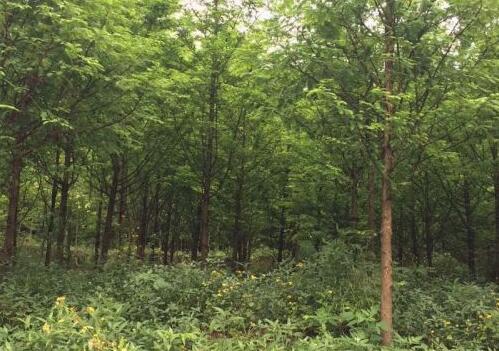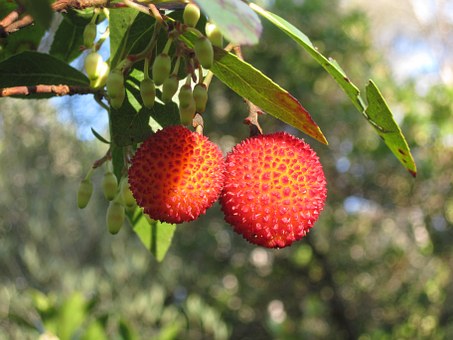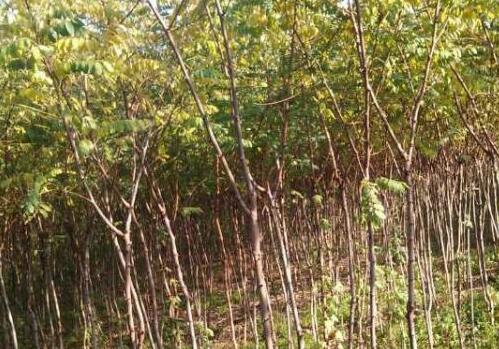How much is the price of deciduous Arbor Cryptomeria fortunei seedlings? What's the difference between metasequoia and metasequoia? How to grow and cultivate?
Cunninghamia lanceolata, also known as cypress, marsh feather pine, deciduous trees, up to 25 meters high. Like deep, loose and moist acid soil, flowering in March and fruit ripening from October to November. How much is the price of that sequoia seedling? What's the difference between metasequoia and metasequoia? How to grow and cultivate?

How much is the price of a small sequoia seedling?
The prices of seedlings of different specifications are different, the following is the finishing price, for reference only.
Seedling name breast diameter (cm) unit price (yuan) Taxodium 38 Pool Sequoia 415 Pool Cunninghamia lanceolata 528 "38 Pool Taxodium 645" 65 Pool Cunninghamia lanceolata 770 "110 Pool Cunninghamia lanceolata 890" 140 Pool Cunninghamia lanceolata 9120 "180 Pool Cunninghamia lanceolata 11170" 240 Cunninghamia lanceolata 12220 "310 Cryptomeria fortunei 13260" 480
What is the difference between sequoia and metasequoia?
1. Look at the height
The height of Cunninghamia lanceolata can reach 25 meters, and its trunk is very straight.
Metasequoia glyptostroboides can be as high as 35 meters, and the bark is mostly brown, gray or dark gray.
2. Look at the florescence
The flowering period of Cryptomeria fortunei is March of each year, and the fruit is oblong or spherical in shape.
The flowering period of Metasequoia glyptostroboides is February every year.
3. Look at the fruit
The fruit of Cunninghamia lanceolata ripens from October to November every year, and the fruit is a little big and round.
The fruit of Metasequoia glyptostroboides ripens in November every year, and the fruit is a little small and oval.
4. Look at the leaves
The leaves of Cryptomeria fortunei do not develop, the leaflets grow close to the branches, and the trunk branches are less and straighter than Metasequoia glyptostroboides. In addition, the leaves of Cryptomeria fortunei are slender and slightly curved downward.
Metasequoia glyptostroboides leaves are linear alternate, Metasequoia glyptostroboides leaves open, leaflets in a plane, trunk branched.
5. Look at the light
Cunninghamia lanceolata doesn't like light.
Metasequoia likes light.
How to plant Taxodium chinense?
The main results are as follows: 1. Cryptomeria fortunei plants are generally planted in fertile and humid sandy loam soil, and sufficient base fertilizer should be applied before planting plants. At the same time, covering the soil with a layer of plastic film is more beneficial for plants to preserve soil moisture and prevent soil consolidation. In general, Cryptomeria fortunei is suitable to be planted in soil saturated or waterlogged environment. Under dry environment, attention should be paid to watering to resist drought so as to maintain a normal net photosynthetic rate.
2. The Hypocotyl of Chibin plant is long and crisp in the seedling stage, and the growers should remove the grass cover in time, which can effectively prevent seedling injury. In the seedling stage, the seedlings of Cryptomeria fortunei are sensitive to water deficit, and the seedling bed should be kept moist often. After that, topdressing should also be increased, from late May to mid-August, every 2-4 weeks, the amount of fertilizer per hectare calculated by urea is 150-225 kg. In order to effectively prevent the yellowing of seedlings, appropriate amount of ferrous sulfate should be applied in time. Growers should loosen the soil and weed in time after each fertilization and irrigation.
3. Cryptomeria fortunei is a fast-growing tree species with strong positive, strong cold tolerance, strong water flooding resistance and drought tolerance. It likes deep, loose and moist acid soil, and geniculate roots often appear around lakes and on both sides of rivers with strong resistance to wind. Seedlings and young trees are sensitive to soil acidity, yellowing and poor growth occur in different degrees when the soil pH value is above 7. Afforestation: it can be afforested in winter or between February and March in spring.
Time: 2019-04-09 Click:
- Prev

"agate in the fruit" how much is the red bayberry seed per jin? Can I plant it? How do you plant it? When will it be ready?
Bayberry, also known as tree plum, Shengsheng plum, white plum, etc., is a common fruit in Hunan, Guangxi, Guizhou, East China and Guangdong. It is widely planted because of its high medicinal and edible value.
- Next

How much is the "short-lived tree" torch tree seedling price? What does it look like? Is it harmful to people? How
Torch tree, also known as antler lacquer, torch lacquer, Canadian salt skin wood, is widely cultivated in the provinces (regions) north of the Yellow River Basin, and is mainly used for barren mountain greening and saline wasteland scenic forest species. So how much is the torch tree seedling price? What does it look like? Is it harmful to people? How to cultivate and plant
Related
- Fuxing push coffee new agricultural production and marketing class: lack of small-scale processing plants
- Jujube rice field leisure farm deep ploughing Yilan for five years to create a space for organic food and play
- Nongyu Farm-A trial of organic papaya for brave women with advanced technology
- Four points for attention in the prevention and control of diseases and insect pests of edible fungi
- How to add nutrient solution to Edible Fungi
- Is there any good way to control edible fungus mites?
- Open Inoculation Technology of Edible Fungi
- Is there any clever way to use fertilizer for edible fungus in winter?
- What agents are used to kill the pathogens of edible fungi in the mushroom shed?
- Rapid drying of Edible Fungi

